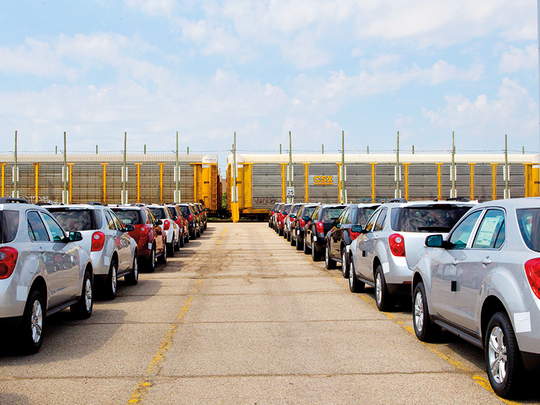
What is Nafta?
The North American Free Trade agreement is a treaty between the United States, Mexico and Canada that began in 1994. It established one of the largest free-trade zones in the world by removing almost all tariffs on products moving between the countries.
Why does US President Trump want to terminate Nafta?
Trump believes the Nafta is responsible for taking jobs away from the US, especially factory jobs.
Is this true?
Maybe. Many manufactures have moved operations to Mexico because of the lower wages there, and the US has lost 5 million factory jobs since 2000. However, a report by Ball State University’s Centre for Business and Economic Research says that as much as 88 per cent of lost jobs have come from automations — not Nafta.
However, there is a considerable amount of debate over whether any jobs that have moves south have had a negative impact on the US economy. Many of the factories that have moved south send products that are used in other manufacturing sectors back to the US, causing many to claim that Nafta has helped create as many jobs north of the border. Estimates on the number of job that depend on Nafta range widely from 1 million to 7 million.
Also, many economists argue that any job losses have been offset by the economic benefit that the US consumers have received from cheaper goods imported into the country.
However, the bottom line is that no one really knows just how many jobs have been, if any. In 2015, a report by the Congressional Research Service said, “In reality, Nafta did not cause the huge job losses feared by the critics or the large economic gains predicted by supporters.”
What is Canada’s role in this?
Mexico isn’t the only country that the US has a problems. Canada and the US have a long history of trade disputes, although these have focused more on commodities than jobs, since the standard of living between the two countries are roughly similar. In the history of Nafta, Canada has received more complaints (35), mostly from the US, that either the US (22) or Mexico (20).
What are some of the areas of the economy most concerned with Nafta.
Automobiles
Perhaps no industry is more closely entwined with Nafta, or has more at stake if there is a drastic shift in trade policy, than the automotive sector.
The sector is a major employer in all three member nations: Canada, Mexico and the United States. Hundreds of thousands of workers in the United States are tied to the industry, while Mexico and Canada each rely on automaking for tens of thousands of jobs.
The countries’ automotive sectors are also tightly linked, exporting and importing billions of dollars’ in auto parts from one another. Last year, the United States imported 1.6 million vehicles — mainly small cars — from Mexico. But about 40 per cent of the value of the components in those vehicles, such as engines and transmissions, came from plants in the United States. And about 40 per cent of the nearly 2 million vehicles the United States exports go to its Nafta partners, according to data compiled by the Centre for Automotive Research in Ann Arbor, Michigan.
Apparel
Textile, retail and apparel companies all say that Nafta can be improved. But pulling out entirely would be highly disruptive to the global supply chains that power businesses as varied as billion-dollar brands and small yarn manufacturers in Georgia.
US textile producers shipped more than $11 billion in goods to Canada and Mexico last year, according to Lloyd Wood, the director of public affairs for the National Council of Textile
Agriculture
Agricultural trade between the three countries has significantly expanded under Nafta, but many economists agree that the trade deal was only one factor in that increase. International trade agreements, changes in domestic farm policies, and laws and international trade rulings were all part of the mix.
US corn, for example, now flows into Mexico, a market from which it was once mostly excluded. And common food safety standards introduced under the pact led to an explosion of Mexican exports to Canada and the United States, particularly of avocados. But the agricultural provisions in Nafta, perhaps more than those for other sectors, allowed the countries to keep some of their markets closed. Canada still has tight controls for dairy, poultry and egg production, effectively shutting out imports from the United States and Mexico to keep domestic prices high.
Medical Devices
Manufacturers of medical devices have come to rely significantly on the free flow of goods afforded by Nafta. The United States imports about 30 per cent of its medical devices and supplies, and Mexico is a leading supplier. Several US companies have established factories in Mexico in recent years, including Medtronic, the large device maker, and Integer, which makes components for defibrillators. Moving that work back to the United States could be complicated, given that the Food and Drug Administration must sign off on even the smallest changes at medical factories.












